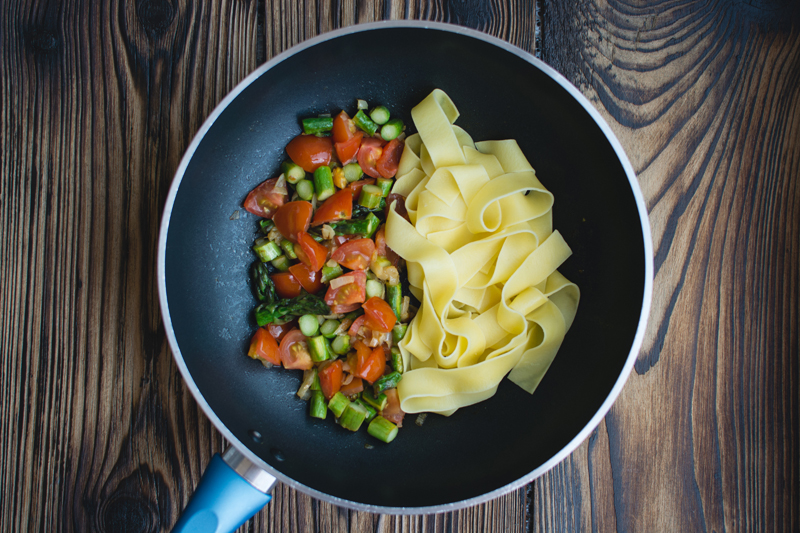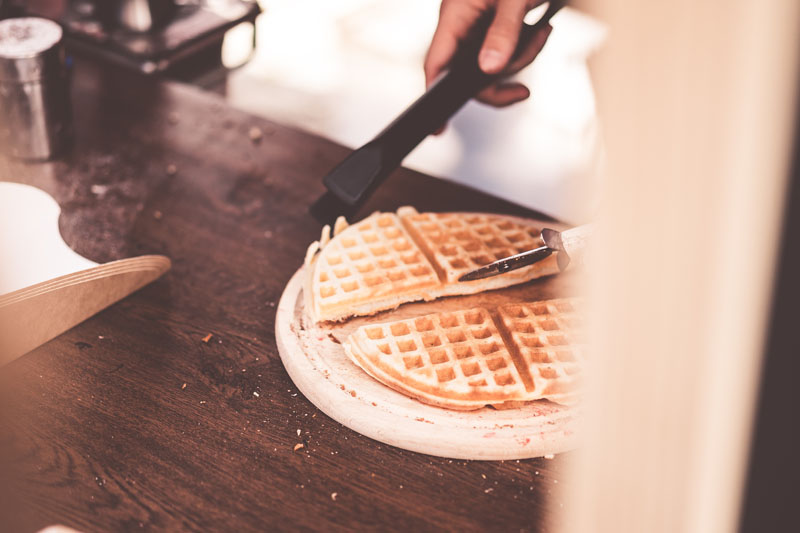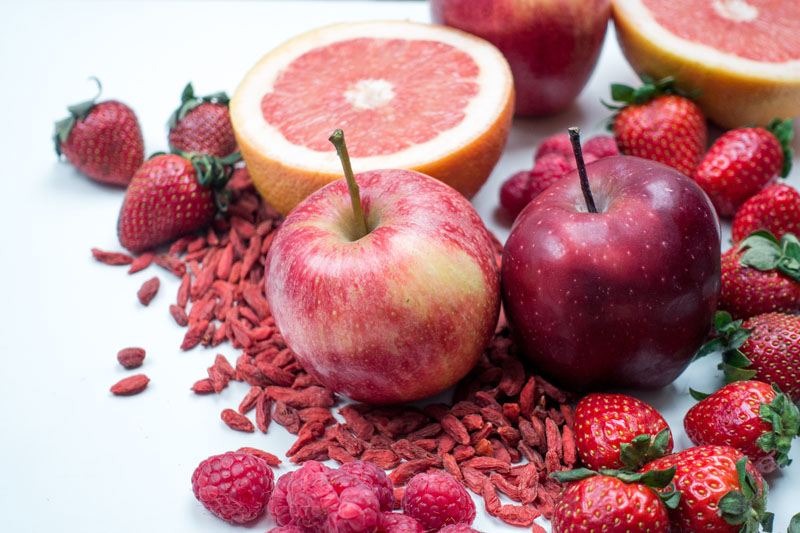Carb refeeds are like magic when it comes to fat loss. If you follow a carbohydrate refeed properly, you’ll retain more muscle, lose more fat, and perform better over the long term. And they’re also a good way to enjoy your favorite foods on a semi-regular basis if done correctly.
Dieting Is Hard On Your Body
When you’re eating fewer calories than you burn by creating a caloric deficit, you’re putting your body under stress because this process forces our body to break down and mobilize fatty acids at a rate that’s higher than normal.
In fact, you’re burning fat all day long. If you’re sitting down or on a walk while reading this, guess what? You’re probably burning body fat (unless you just ate a meal, but don’t worry about that. Hang with me here).
But when you deliberately restrict your intake, you force your body to rely on reserve energy, also known as body fat. This is how we lose body fat on purpose, by eating less than we burn each day.
Over time, dieting can be stressful on the body because of the energy deficit. Carbohydrate refeeds can help you feel better, perform better, and they can even relieve the stress you’re putting on yourself by raising certain hormones and lowering others. We’ll get into that in a bit.
What’s Carb Refeed?
Carbohydrate refeeds are short periods where you strategically and purposely eat more carbs than normal. There’s a big range in terms of what’s best for you, but in general, we’ll put the range at somewhere between 300 grams and 1000+ grams of carbohydrates.
If that seems like a crazy huge range, it’s because it is. Refeeding on carbohydrates are important for various reasons, all of which we’re covering in this article.
The Science Of Refeeds
While refeeding is rooted deep in the bodybuilding culture where a group of individuals were doing much of this dietary manipulation before there were hard data and science to back it up. And what’s cool is that while some of it might be unnecessary from a practicality and performance standpoint, lots of it actually checks out.
In this section, you’ll learn the process of refeeds, how they work and why they work.
What’s The Point Of Overeating On Carbs?
The short version: body and mind. When we’re dieting hard to lose body fat, the body’s metabolic processes naturally slow down. Over time, you will eventually burn up glycogen (carbs stored in your muscles) and this can have a negative effect on your performance in the gym.
Refeeds help refill glycogen and give a bump to the hormones in your body that regulate weight gain or loss.
Glycogen and performance
If you can’t perform your best in the gym, you might begin losing muscle. This is especially so if you go too long without taking a break from dieting by eating more food, or having a high carb (refeed) day.
Glycogen (carbs stored in the muscle) are what gives you energy in the gym. So while you’re losing fat on a diet, and you’re using weight training as your primary means of exercise, you’re not actually burning fat for fuel during your training.
This is a common misconception, especially when people are so adamant about losing body fat. They tend to cut carbs to very low levels in order to speed up fat loss, and while it does work, it’s not optimal and can actually hurt your efforts in the short and long term.
When you’re strong in the gym, it has a lot to do with your levels of glycogen. And when you’re feeling weak, it can be for many reasons such as being in a calorie deficit too long, lack of sleep and proper rest, but also a lack of stored glycogen.
Hormones: Thyroid and Leptin
If carbohydrates are too low for too long, you will produce less T3 (thyroid hormone), which can ultimately slow down your metabolism making it harder to consistently lose fat.
The following excerpt is pulled directly from my fat loss course for men, 4D Fat Loss.
T3 is the most potent form of the hormones and is the most active in the body. It’s responsible for growth and development and regulating heart rate, body temperature, and not so surprisingly, your overall metabolic health.
In fact, one of the most common causes of a slower metabolism is lowered T3 production. Some of these signs and symptoms can manifest in a low body temperature (with waking temperatures consistently below 98°) and feel cold most of the time (mostly having icy hands and feet, especially upon waking).
Now bear with me, as I dive into some of the research on carbohydrate and metabolic health in brief. In the 70s, there was an obesity study done at the University of Vermont, in which men were overfed for seven months—so much that they gained up to 25% above their ideal body weight. What they found was that after they’d gained the weight, they then required 50% more calories to maintain their heavier body weight than they did at their original leaner weight.
The researchers wondered if there were changes in thyroid production that caused them to require more food as a result of increased thermogenesis (production of heat within the human body). They then decided to do another experiment, in which they’d taken two groups—a high-carb group and a high-fat group—and overfed them again.
The high-carb group was overfed with a diet of mostly carbs for 7 months, and the high-fat group was overfed with a diet of mostly fat for 3 months.
Both groups did gain weight, and they were returned to their maintenance level diet. During the maintenance level diet, the levels of T3 within the high-carb group were higher than that of the low-carb diet group. Then, when they put the low-carb folks on a high-carb maintenance diet, their levels of T3 rose(1).
When they compared the diets directly with the amounts of T3 they produced on any given day, each succeeding level of carbohydrate intake seemed to progressively improve T3 production directly. This showed that increasing carbs, regardless of the calorie and macronutrient totals, seemed to show greater T3 production(2).
Yet another study showed that after 4 days of fasting in obese subjects, T3 levels declined significantly. After the fast, some were given diets of mostly protein or mostly fat, but neither of those restored their T3 levels. When they were given a mixed diet of protein, carbs, and fat, however, T3 levels rose significantly. It’s also interesting to point out that a carb-only diet showed similar increases in T3 hormone levels(3).
So we know that carbohydrates are important for thyroid production… but it’s also important for another hormone: Leptin.
What Leptin Is And Why It’s Important
Leptin is a hormone (discovered in 1994 by Jeffrey M. Friedman, Ph.D.) that is produced by fat cells. Its role is to regulate weight through means of controlling appetite. The short version of all the science mumbo-jumbo is that the more fat you have in your fat cells, the higher your leptin levels; the leaner you are, the less leptin you secrete.
Leptin levels have a huge impact on the dieting process because as a result of dieting and losing body fat, leptin decreases as a result. Lowered leptin levels tell the brain the body needs food, making you hungry and more likely to overeat and sabotage your dieting efforts. This is simply the body’s natural evolutionary mechanism for survival, and it’s a major reason why people go on apocalyptic-level binge episodes.
To combat this, we have to create a “fed” signal through the short-term manipulation of our diet.
One of the main advantages of a refeed is the ability to give you a bump in a hormone called leptin. When you diet for an extended period of time, and you’re losing fat, you run low on leptin after a while. When you’re low on leptin, hunger tends to increase, causing you to eat more.
And when you eat more, you will probably gain some body fat, thusly restoring some leptin in the process. However, high-carb meals have been shown in the research to improve leptin levels more so than a high fat meal.(4)
And when you limit fat intake during a high carb day, you’re less likely to store that fat as body fat.
Carbs Spare Muscle Tissue
On a diet, your body is pulling energy from 3 potential sources: fat (body and ingested), carbohydrates (stored as glycogen) and muscle tissue (or ingested protein).
Ideally, you want your body burning body fat and carbohydrates, never protein. So if you train hard, which requires glycogen (carbs), and you restrict carbohydrates too much, your body will have to turn protein (either what you ate, or your muscle tissue) into glucose for fuel.
And turning protein into glucose (sugar) is a costly process. So if you diet too hard, restrict carbs for too long, you’re likely to cut into your muscle tissue unless you’re consuming a very high protein intake (somewhere around 1.5 grams or more per pound of body weight).
What Are The Benefits Of A Carb Refeed?
While I’ve covered the physiological benefits of refeeds above, it’s time we go over the psychological aspects.
The Mental Woes Of Dieting
Dieting for a certain period of time (anything longer than 4-6 weeks) can be hard on the individual mentally because let’s face it… hunger sucks. There’s little worse than feeling tired, lethargic and hungry for all the foods you’re abstaining from on a diet.
I mean, actually, there are MANY things much worse going on in the world than being a little hungry on a diet so you can lose a few pounds to look great at the beach, but you get what I’m saying.
If you’re fortunate enough to have the luxury of dieting so you can improve your appearance, you know how it can impact your mental state.
So here are a handful of ways that a refeed can help you psychologically.
- A refeed gives you something to look forward to. When it comes to dieting, it’s nice to know you have a high carb day coming up so you can prepare and plan for some of those foods you’ve been missing out on.
- A refeed makes you feel better physically. And this helps you relax mentally. Dieting raises stress hormones and can keep you on edge and even keep you from sleeping deeply. When we overeat on carbs, it allows us to relax, kick back and chill out. This body relaxation is good for the mind.
- It can help restore sleep patterns. If you’ve been struggling to sleep well because of the dieting, having a high carb refeed day can help ease you into a slumber fit for a bear getting ready for hibernation. I mean, you’re not a bear, so don’t sleep your week away. You get the point.
- It can help you stay on track with your diet long term, which is the entire point. Refeeds are there to help you make progress. And many times, saying to hell with the diet comes from not being able to chill out and enjoy some foods you really want in large quantities.
Who Is It For?
In short, carb refeeds are for anyone who is dieting and wants to have a more methodical approach to losing fat. It’s also for anyone who is very serious about getting to low levels of body fat without sacrificing lots of hard-earned muscle in the process.
How Often Should You Do A Refeed?
This will depend on the individual, how much fat you have to lose, starting body weight, and how steep your dietary deficit is.
For men, here’s a general rule of thumb in terms of body fat percentages.
Men under 10% / Women under 15% body fat: 3-4 refeeds per month
Men between 11-15% / Women between 16-20% body fat: 1-2 refeeds per month
Men above 16% / Women over 21% body fat: 1 refeed per month*
*This is going to vary somewhat based on how steep the deficit is, and how much activity the individual is doing, among many other factors.
Here are some images for reference to figure out your body fat percentage:
Men’s Body Fat Examples:
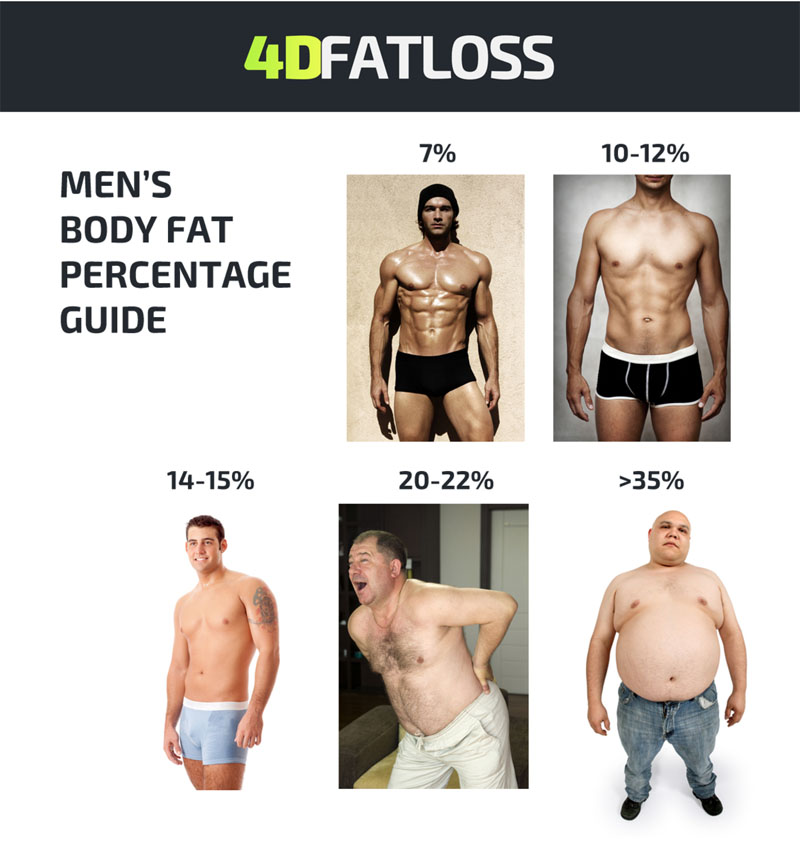
Women’s Body Fat Percentage Examples:
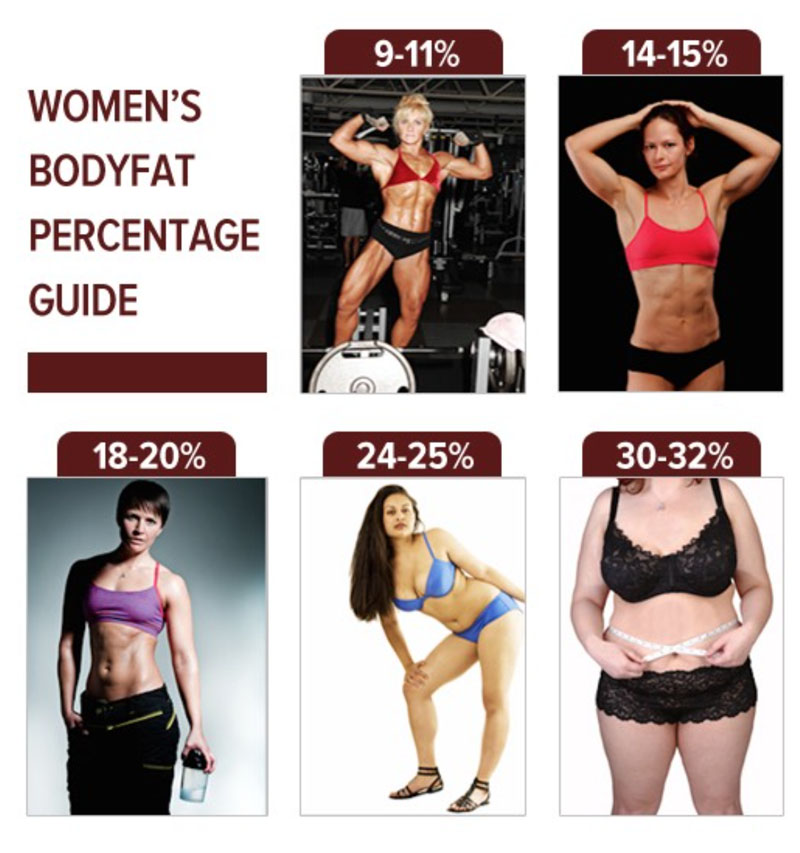
What Do I Eat On A Refeed?
Well I’m glad you asked.
First of all, you need to see this section through a narrow lens with the two concepts in mind:
- Which foods are best
- Which foods make you full
To start with the best foods, you want to focus most of your eating on carbohydrates, particularly what we call lean carbs. Lean carbs are those sources with very little to no fat and are primarily starchy (with a small amount of fruit).
A good example of lean carbs:
- Potatoes
- Rice
- Fruit
- Various grains (oats, quinoa, etc)
Not so lean carbs:
- Bread (can have various amounts of fat depending on the type)
- Any fried carb
- Pizza
- Donuts
- Cake
How Does Food Affect You?
The next thing you want to think about is how full these foods will make you feel. For instance, beans are a decent carb source but they’re full of fiber and eating lots of beans on a refeed day is bound to make you gassy, miserable, and possibly constipated.
Any foods that tend to make you bloated or upset your stomach should be avoided at all costs. So if you already know that certain grains or bread bloat you, write them out of your plans for a carb refeed.
You should always stick to foods that don’t cause any digestive distress or allergic reactions (duh).
Are There Foods To Avoid?
Yes, there are two foods to avoid at all costs:
- Foods that cause digestive distress
- Foods that are high in fat
- Excess fructose
- Fibrous green veggies (because they will make you very full, so eat in moderation)
I’ve already covered the foods that cause you stomach issues. Since carb refeeds are done best with a low fat intake, you’ll want to avoid foods that are high in fat such as nuts, seeds, avocados, fatty meat, etc.
You’ll also want to avoid those so-called carb treats such as donuts, cake, and creamy pasta. The reason for this is because on a refeed, we need to keep fat very low (between 30-50 grams), so any carbs with even a moderate amount of fat can add up quickly.
What About Fruit Sugar?
This is one of those things that needs to be mentioned. All fruit contains some amount of fructose. For example, a medium size apple contains:
- ~100 calories
- 25 grams of carbs
Roughly half of those of carbs (13g) from fructose, while the other half is sucrose and glucose.
The reason this should be mentioned is that fructose fills up liver glycogen, and all other sugars fill out muscle glycogen. Since the liver stores fructose, there is a limit to how much it can actually store… upwards of 100 grams total when it’s depleted(5).
So knowing this, you want to make sure you don’t overdo the fructose. That means a few pieces of fruit is totally fine, but I would not drink any type of sugary soft drink or juices because they contain a lot of fructose.
How To Setup A Refeed
First of all, know that you’re going to be consuming a lot of carbohydrates over a short period of time (1-2 days). So you’ll need to focus on planning ahead and sticking to your meal times because if you fail to nail these steps, you’re likely to not eat enough because you’ll get full.
Plan Ahead
Those who fail to plan, plan to fail… yadda yadda yadda. We all know the saying. But it’s true. So plan ahead by going to the grocery store and stocking up on all the carbs you know you’ll need for this day.
Stick to the foods you want to enjoy and know you’ll be able to eat a lot of. Then make sure you prep ahead of time. Plan on eating a lot of rice? Make sure you have plenty of it cooked. The same goes for potatoes and any other foods that require effort and cooking time.
Because believe it or not… you’re likely to get very full on a refeed day and the last thing you want to have to do is cook more rice or potatoes, or whatever when you just wanna lie around eating rice and watching anime.
Meal Frequency
I tell most people to stick to their regular meal frequency but add 2-3 snacks when/if necessary.
If you normally eat 3 meals, then having 2-3 carb only snacks is a good way to hit your total intake.
The reason for this is to avoid having extra large meals for all 3 of your regular meals. But if you enjoy having huge meals, that’s totally fine too. Ideally, you’ll spread out the total intake in as many meals as possible to avoid getting overly full or bloated.
Types Of Refeed Protocols
There are generally 3 types of protocols for these so-called refeeds.
They are:
- Every other day refeeds
- Weekly
- 2-3 day cluster
The frequency of the refeeds will be determined by how much body fat you have, how big of a deficit you’re in, and how many days in a row you’re in a deficit.
If you’re in a large deficit (eating 600-1000 calories under maintenance per day), then you’ll want to have more frequent refeeds, or a larger refeed once per week. If you’re in a more moderate deficit (eating 500 or fewer calories under maintenance per day), then the refeed will be smaller.
Let’s look at a few examples.
Every Other Day Refeeds
(Or training day refeeds)
These refeeds, by definition, will be over maintenance but since you’re likely having 2-3 of these days per week, you’ll need to make sure you’re only 200-300 above maintenance on these days so you can still create a deficit over the other 4 days per week.
In this case, someone is training with weights 3 days per week and resting or doing some moderate cardio on the other 4 days during the week.
For this example, someone has a maintenance caloric intake of 2,500 calories per day.
On training days, they eat 2700 calories with a big portion coming from carbohydrates. On their off days, they’re consuming 1900 calories (creating a 600 calorie deficit).
Example Modest Refeed Day Macros for a 180-pound person:
2700 calories
Protein: 180 grams
Fat: 60 grams (20% of 2700 calories)
Carbs: 360g (remainder of intake)
Weekly Refeeds
Weekly refeeds will be much bigger than just a few hundred calories over maintenance because you’ll need a lot of carbohydrates to refill the glycogen stores, plus you want a big dose of carbs, along with the caloric surplus to reduce stress hormones and give yourself a quick leptin bump without pumping fat back into your fat cells.
An easy example here is to have someone follow a 500 calorie deficit for 6 days in a row, then have a large refeed (+1000-1500 calories above maintenance).
This way, you’re still in a net weekly deficit, but getting all the benefits of being in a caloric surplus for hormone health and to get that bump in metabolism and leptin.
Example Weekly Refeed Day Macros for a 180-pound person:
4200 calories (+1500 kcals)
Protein: 180 grams
Fat: 40 grams (keeping fat low)
Carbs: 780g (remainder of intake)
2-3 Day Cluster Refeed
Finally, this is one of the best methods for long-term dieting or to maintain leanness. For this example, you would maintain a 500-600 calorie deficit for 4-5 days, and then follow that up with a large refeed (1000 calories over maintenance) and then 1-2 days at maintenance with a high carb intake.
In this example, you would refeed on day 5 or 6 and then eat maintenance calories over the weekend. This can be advantageous for those who want to eat more and relax on the weekend.
Example 2-Day Cluster Refeed Day Macros for a 180-pound person:
Day 1: 4200 calories (+1500 kcals)
Protein: 180 grams
Fat: 40 grams (keeping fat low)
Carbs: 780g (remainder of intake)
Day 2: 2700 calories
Protein: 180 grams
Fat: 60 grams (20% of 2700 calories)
Carbs: 360g (remainder of intake)
And now, the final question:
How Many Carbs Do I Eat?
Before I give some numbers, remember this is mostly about 2 things:
- Keeping fat low
- Pushing your intake above and beyond maintenance for a short period (1-3 days)
In general, on the days you eat more carbs (regardless of the refeed strategy), you want to keep it relatively low. Now relatively low is going to be dependent on your total expenditure, but in general, you can use percentages of 15-20% of fat coming from total intake when you’re eating only a few hundred calories above maintenance or at maintenance.
But on the days you’re consuming upwards of 1,000 calories above maintenance, it’s ideal you try to keep fat somewhere between the 30-50 gram mark.
The reasoning for this is because when you’re consistently eating in a caloric surplus, the body will store as much of the food as possible, by any means possible.
Protein should always be kept somewhere between .8 and 1 gram per pound of body weight, regardless of the rest of your intake. Note: I would lean more toward 1 gram per pound of body weight when dieting.
Carbohydrates, contrary to what Dr. Oz or Dave Asprey may have told you, are not easily stored as body fat. In fact, you have to first top off your glycogen stores, in both skeletal muscle and liver, to start converting those carbohydrates as fat.
It’s only after you completely saturated your muscles and liver that the body begins to convert carbs to fat.
And if you’ve been in a dietary deficit, actively exercising and moving your body, then you’re definitely burning through glycogen. So don’t worry about excess carbohydrates being stored as fat.
If you wish to learn more about this process, it’s called de novo lipogenesis.
Fat is most easily stored as fat on the body when in a caloric surplus. That’s just how this works. Since fat doesn’t have to go through a conversion process to be stored in the body, it gets stored directly into the fat cells. This is why overfeeding on fat is a bad idea when in a caloric surplus.
“Alternatively, fat overfeeding had minimal effects on fat oxidation and total energy expenditure, leading to storage of 90-95% of excess energy. Excess dietary fat leads to greater fat accumulation than does excess dietary carbohydrate, and the difference was greatest early in the overfeeding period.” – Source
The total amount of carbohydrates you’ll eat will be dependent on your total intake necessary for the refeed. See the examples in the previous section for an idea but here’s the general formula:
Protein: 1 gram per pound of body weight
Fat:30-50 grams on high carb refeed days and 15-20% of intake on moderate refeed days (200-300 calories above maintenance)
Carbs: the remainder of intake after protein and fat have been set.
What To Expect (so you don’t freak out)
If you decide to embark on incorporating refeeds into your diet for more fat loss and better muscle retention, here are a few things you MUST know:
Scale Weight Swings
If you’re tracking scale weight and body measurements (waist, hips, thighs, shoulders, etc), you should ideally do them throughout the week during the dieting days, as well as the morning of your refeed.
Because on the day you refeed with lots of carbs, you’re going to gain weight in the form of water retention and just having way more food in your system. You might even find you’ve gained 5-10 pounds in the evening from your morning weigh-in. Do not be alarmed.
This is totally normal. In a few days, you’ll likely return to your consistent weigh-in and measurement records. So don’t worry too much. The weight will subside.
Water Retention, Bloating, Dryness
In a perfect world, you’ll wake up the next day post-refeed and look leaner and more defined. But this doesn’t always happen due to many factors such as:
- How much water you drank during the refeed
- How much sodium you had (if it’s a lot more than normal, expect some bloating)
- How your body responded to the influx of carbs
So remember… you will likely see some water retention, and that’s okay. But don’t make the mistake of thinking it’s fat gain. If you kept your fat loss, focused mostly on starchy carbs over fruit, and did the refeed properly, you’ll be okay and your body weight and puffiness will return to normal levels in a few days.
Refeed FAQ
Q. Can I eat out during my refeed?
A. Yes, but be very careful about your food choices. Ideally, I find that sushi is a great go-to because you can control the type of rice and fish you consume. For instance, plain white rice, sushi (not the rolls) and sashimi are great choices.
Q. Can I have a fatty food I’m craving during the refeeds?
A. You can, but you should practice caution and beware of how much fat is in a typical burger or pizza at a restaurant (upwards of 30+ grams per serving). Best to make these at home to control for fat intake.
Q. Is this approach slower than a standard weight loss approach (without refeeds)?
A. Most likely yes, a bit slower because the weekly deficit is smaller, but I would argue it’s far more optimal.
References:
1, 2, 3. “Is a Low Carb Diet Bad For Your Thyroid? « Anthony Colpo.” 2012. 9 May. 2016
4. Romon, M. “Leptin response to carbohydrate or fat meal and association – NCBI.” 1999.
5. Lyle McDonald’s The Ultimate Diet 2.0 covers this in depth.
